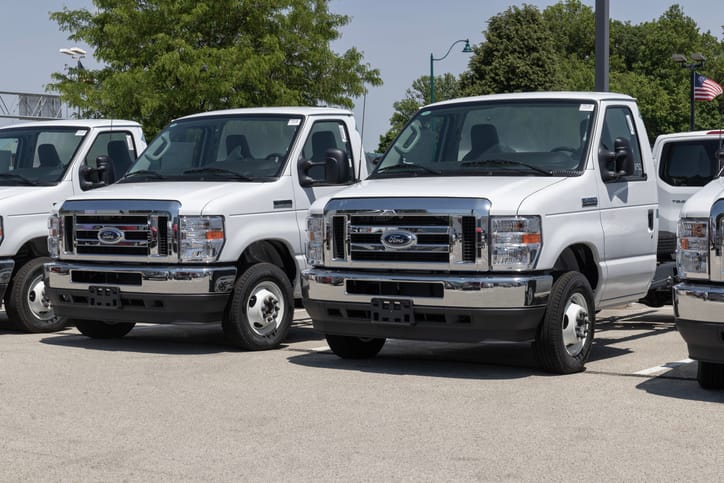The Enduring Legacy of the Ford E-Series Van: From Station Wagons to Workhorses

In the expansive landscape of American vehicles, few models boast the longevity and versatility of the Ford E-Series van. Introduced in 1961 as the successor to the F-Series panel van, the E-Series carved its own niche, evolving from family-friendly station wagons to the ubiquitous workhorse of countless industries. This 800-word article delves into the rich history of the E-Series, tracing its transformation through four generations and exploring its enduring legacy as a symbol of both practicality and adaptability.
First Generation (1961-1968): The Econoline Arrives
The debut of the E-Series, initially named the Econoline, marked a significant shift in Ford's van offerings. Replacing the boxy F-Series, the Econoline introduced a sleeker, more car-like design with wider windows and integrated headlights. Available in three sizes (Econoline 100, 200, and 300), it catered to both families seeking spacious transportation and businesses requiring efficient cargo capacity. The first generation also offered passenger and cargo configurations, laying the foundation for the E-Series' diverse future.
Second Generation (1969-1974): Expanding Options and Refinement
The second generation saw the Econoline name morph into "E-Series," reflecting a broader product range. The design retained its familiar silhouette but received notable updates, including a longer wheelbase for increased passenger and cargo space, improved suspension for smoother handling, and a wider variety of engine options. This generation also introduced the luxurious Club Wagon, aimed at affluent families and executive transport. The E-Series was gradually establishing itself as a versatile platform capable of catering to diverse needs.
Third Generation (1975-1991): Embracing Efficiency and Innovation
The 1970s oil crisis spurred a focus on fuel efficiency, and the E-Series adapted with smaller engines and aerodynamic improvements. The third generation also witnessed significant safety advancements, including energy-absorbing steering columns and reinforced door structures. While passenger vans continued to be popular, the stripped chassis and cutaway models gained prominence, providing a robust platform for ambulances, school buses, and recreational vehicles.
Fourth Generation (1992-2014): A Modern Workhorse Emerges
The final incarnation of the E-Series shed its station wagon roots and fully embraced its role as a workhorse. The design modernized but retained its practicality, offering a spacious cabin, high payload capacity, and a choice of powerful V6 and V8 engines. The stripped chassis and cutaway models became the core offering, catering to a vast array of commercial applications. With its proven reliability and adaptability, the E-Series became a ubiquitous sight on construction sites, delivery routes, and emergency services fleets.
The Legacy Lives On: From Cutaways to Electric Dreams
While passenger E-Series production ended in 2014, its legacy lives on in the Ford Transit and the surviving cutaway and stripped chassis models. These versions cater to the ever-evolving needs of businesses and municipalities, showcasing the platform's enduring versatility. Looking ahead, Ford's commitment to electrification opens exciting possibilities for the E-Series nameplate. Rumors of an electric Transit variant suggest that the spirit of practicality and adaptability might soon take on a sustainable form, ensuring the E-Series' relevance for generations to come.
Beyond Specifications: A Cultural Icon
The Ford E-Series transcends mere specifications. It's a cultural icon, woven into the fabric of American life. From soccer mom shuttles to rock band tour vans, from food trucks to makeshift homes, the E-Series has served as a blank canvas for countless pursuits. Its utilitarian nature paired with its undeniable presence has earned it a devoted following, solidifying its place in automotive history.
In conclusion, the Ford E-Series van journey is a testament to innovation, adaptation, and unwavering practicality. From its humble beginnings as a family wagon to its current role as a ubiquitous workhorse, the E-Series has consistently evolved to meet the needs of its time. As the automotive landscape embraces electrification, the E-Series nameplate might yet take on a new chapter, proving that sometimes, the most enduring legacies are built on a foundation of unwavering usefulness.
